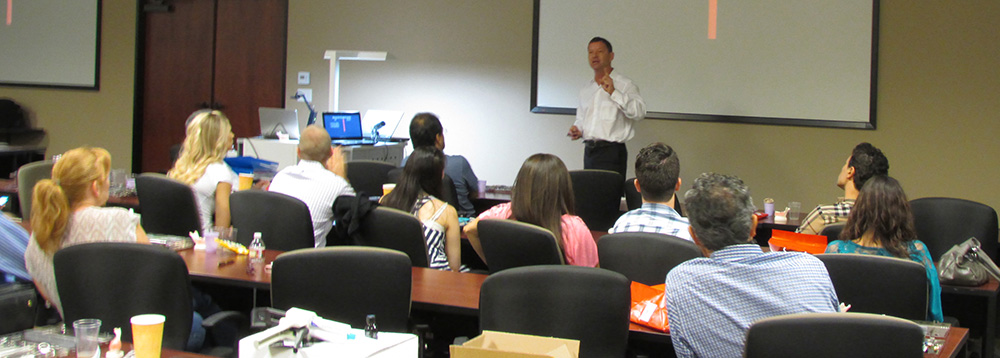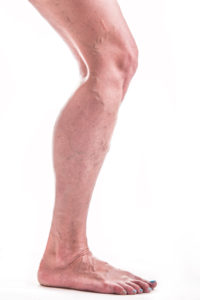Is Your Medical Study Group Interested In Offering Botox Training?

Why not offer the best available Botox training course to your medical study group? When you select Botox and dermal filler training from Dr. Howard Katz, you’re choosing to be trained by one of the inventors of cosmetic and therapeutic Botox — and it really makes good sense to get your training from the source rather than from a johnny-come-lately with inferior skills and a reputation that does him no credit.
Selecting Dr. Katz as your Botox trainer means that your medical study group can have the world’s leading expert on Botox come to you with comprehensive training that you’ll find fun, easy to following and complete in every way. It may even be possible for you to practice the skills you’re learning on real people, depending on your state’s regulations and the status of your license.
Hundreds have already been trained by Dr. Katz, and these people have gone on to become experts in their own right thanks to the high-quality education he has provided them. They use Botox for medical and cosmetic purposes as a regular part of their medical and dental practices and routinely satisfy patients while enhancing the bottom lines of their practices. Wouldn’t that be great for you and your medical study group too?
One you’ve been through the course, you’ll understand the following with complete confidence:
- how to evaluate a patient to see if he or she is an acceptable candidate for treatment with Botox
- how to explain to patients the benefits of Botox and dermal fillers for their overall wellbeing how to recognize and understand contraindications and side effects of Botox
- how the anatomy of the face and neck are involved in choosing the right injection sites, depth of needle insertion and insertion angle for the very best results
- and much more.
You’ll also be able to speak with confidence about how injectable products like Botox and dermal fillers work for cosmetic and therapeutic purposes and how dermal fillers work to enhance the benefits your patients get from Botox.
But the learning process doesn’t stop there. Your medical study group will also learn about:
- how Botox can be used for migraines, habitual muscle clenching, face pain, TMD and more
- how lifting the corners of the mouth can provide aesthetic benefits and prevent inflammation as well
- how dermal fillers can work with or instead of Botox to treat smoker’s lines
- how undesirable outcomes from Botox can be prevented and avoided.
In addition, you’ll learn practical matters about adding Botox to an established practice, like how to sell and get paid for services, how to complete documentation properly and how to choose the right malpractice insurance coverage.
Dr. Katz is known today as the founder of Dentox, a company that teaches Botox training to doctors and others around the world. As one of the most sought after Botox training course providers, he offers a level of training that will help set you and those in your medical study group apart from others.
When you work with Dr. Katz, you can be sure you’re working with a respected name whose presence in your career will add to the respect and attention you get.
Because he’s a busy man, it makes sense not to delay in engaging Dr. Katz to bring his Botox training course to your medical study group. His schedule fills quickly, and missing the opportunity to be trained by the best means missing your opportunity to get the highest quality Botox training possible. And you don’t want that to happen.
To invite Dr. Katz to teach Botox injection to your medical study group, call (858) 550-9533
Houston Online Botox Training Respects Your Time And Your Needs

 Did you know that more than 130,000 people in the Houston area are going to school for something right now? Most are at the city’s nearly 60 colleges, but many more are crammed inside training centers picking up skills they need to enhance their careers.
Did you know that more than 130,000 people in the Houston area are going to school for something right now? Most are at the city’s nearly 60 colleges, but many more are crammed inside training centers picking up skills they need to enhance their careers.
If you went to the University of Houston, Texas Southern or another university in Houston, that’s great. But for Botox training, what you really needs is a great course from a respected instructor that will give you the skills you need quickly and efficiently. You need online Botox training from Dr. Howard Katz and his team at Dentox.
What Makes The Dentox Botox Training Program Best
Led by an industry-leading expert with years of experience training people like you, the Dentox online Botox training program makes sense for Houston medical professionals like you who don’t want to waste your time. Here are some of the things that make it so great:
- You learn proven techniques that will help you bring in new patients but don’t cost you much in startup expenses.
- You get certified from the inventor named on the application for patent for many products, including Botox and Xeomin.
- You experience the world’s only fully interactive and completely hands-on online Botox training.
- You can get free local refresher courses when you happen to be at Dentox headquarters in San Diego.
- You get AGD Continuing Education credit you can use.
What’s Included In The Dentox Program
When you take online Botox training from Dentox at your Houston home or office, you get detailed information on how to inject Botox, when dermal fillers can help your patients and are even taught how to help your patients understand the benefits of coming back to you — and only you — for this cosmetic procedure. It’s complete proficiency plus a whole lot more.
As a course participant, you get all course manuals as well as useful resource lists, samples of consent forms and treatment forms and, of course, proof of your training. You also get the materials you need to prove your competence to Dr. Katz. All the details of how to do that quickly and easily will be explained to you.
Better By Far Than In-Person Classes
In-person classes don’t necessarily respect your time. There’s all the parking hassles, the time away from your practice, patients and colleagues and so many other inconveniences. Plus, learning is actually easier and better when you train online. That’s because:
- It’s easier to connect because the camera brings you in closer than you could ever be in a crowded lecture hall or meeting room.
- You can review the recording of your class whenever you want, even months later if you like.
- Your testing is handled privately at your location, so you don’t have to worry about peer pressure.
- Dr. Katz is available for consultation later by email, so you’re never really alone or on your own unless you want to be.
Make The Smart Choice For Houston Botox Training
It turns out that the best choice for Houston Botox training is a trainer based in California. After all, he’s the world’s foremost expert in Botox training — and you don’t have to wait until he happens to be in town to benefit from his experience and expertise.
You can choose online Botox training from your home or office and get the very best training from the very best source. Whether you’re in Houston or anywhere else, it makes sense to go right to the source and get the very best training available. What’s holding you back?
The Basics of Teeth Whitening


Tooth Whitening With Trays
Bought over the counter at a drugstore or from a dentist, tray-based tooth whitening kits revolve around filling a tray similar to a mouth guard with a gel solution that contains a peroxide-based bleaching agent. The tray is worn as directed, usually for two hours or more a day or even all night for up to a month or longer, depending on how much discoloration is present and how much whitening is desired. We offer a course for business owners who are not dentists, but would like to offer teeth whitening.
In-Office Teeth Whitening
Bleaching procedures performed in the dental office are the fastest method of teeth whitening. In the dental office, a whitening product is directly applied to teeth. This product may be used along with heat, special lights or a laser to enhance results, which can be visible after a single session of 30 minutes to one hour. With several appointments, dramatic results are possible. On the downside, this is the most expensive way to whiten teeth.
How Long Are The Effects Of Teeth Whitening Visible?
It should be understood that no method of teeth whitening is permanent. People expose their teeth to staining substances daily in many cases, causing the whiteness to fade. For some, this can happen in as little as a month. It makes sense to avoid food and drink that cause the worst staining so that results can remain visible for a year or longer, perhaps with touch ups. The degree of whiteness achieved can vary from one person to another depending on factors like how stained the teeth are at the start to what type of bleaching program is used.
Whitening At Home vs. Dentist-Supervised Whitening
Having teeth whitened at a dentist’s office varies from having them whitened at home in a number of ways, including the following:
Bleaching agent strength. OTC and at-home products usually have lower-strength solutions than those used at the dentist’s office. At-home products usually use 10 to 22 percent peroxide while those used in dental offices often contain a product with a concentration of 15 to 43 percent peroxide.
Trays. Dentist-supervised at-home bleaching products are applied with custom-made mouthpieces. The dentist takes an impression so that the trays fit precisely to give maximum benefit by providing maximum contact with the whitening gel. The trays also limit contact of the gel with sensitive gum tissue. OTC products also involve a tray, but these are one-size-fits-none trays that don’t fit anyone very well. This can lead to irritation of the gums and other soft tissue as the bleaching agent gets to areas it should not. When performed in office, bleaching agents are carefully applied directly to the teeth being whitened.
Protective measures. When whitening is performed in a dental office, a gel or rubber shield is put over the gums before treatment so that gums and other parts of the mouth are protected from the bleaching solutions effects. OTC products do not come with this kind of protection.
Costs. OTC products are the least expensive way to whiten teeth while in-office teeth whitening is the most expensive.
Supervision. With supervised at-home treatments and in-office procedures, an oral exam is performed and your medical history is taken into consideration. The dentist can even help you determine if bleaching is a good course of action in your case considering the kind of staining you have and how many restorations you have that won’t respond to bleaching. A dentist can also match your type of staining with the right treatment, if appropriate at all, to reduce the staining. The dentist will also follow-up to make sure you’re performing at-home procedures correctly, to make sure any trays involved fit right and to make sure gums are not being irritated. A general progress check is also usually performed. When you use OTC products, you have no help or support.

Why not revitalize your practice with a Botox Training Course?
Chicago Students Learn Better When They Take Online Botox Training Instead Of An In-Person Seminar

 It may seem counterintuitive to take Botox training online in Chicago since there are at least 75 schools and universities in the area and many more individual trainers and training centers. Why would it be necessary to turn online with all these options here in the area?
It may seem counterintuitive to take Botox training online in Chicago since there are at least 75 schools and universities in the area and many more individual trainers and training centers. Why would it be necessary to turn online with all these options here in the area?
Actually, you can learn better when you choose an online Botox training course because of the many advantages of online training. If you don’t believe that, keep reading.
The University of Illinois at Chicago provides great educational opportunities for some, as does DePaul, Loyola and the Illinois Institute of Technology. But for learning Botox to benefit your resume or your practice, it makes sense to choose the very best in the field — even if he doesn’t happen to be visiting the area when you’re ready for your training.
Learn The Most With Online Training
Institutions of higher learning in the Chicago area that truly value learning have learned something themselves: online training works. That why at least half of all bricks-and-mortar learning institutions now offer online training in one form or another. They’re finally learning what Dr. Howard Katz of Dentox and many trainers in the business field already know: online training increases learning. Here are some of the reasons it’s a great idea:
Greater connection. It’s easy to get lost inside a big lecture hall — and there all those hassles with parking if you go to a training center. But when you train online with Dr. Katz, you feel an instant connection. That’s because he’s experienced at using the camera to create a strong connection with his students — just like news anchors and talk-show hosts do with their audiences. You’re much more connected than if you were sitting at the back of a meeting room for training.
Class never ends. The actual time commitment is very small, but your class is always available for your review. When you train in person, it’s once and done. When you train online, you get unlimited access from Dentox to the recording of your class, so you can rewatch it again and again, picking up additional nuances every time.
No peer pressure. Why do your assessment in front of everyone when you can do it with a series of photos and additional materials privately? Dr. Katz and his team will guide you individually to complete success without you having to perform in front of everyone, causing you unnecessary anxiety.
Access later. When you training elsewhere, you may never see or hear from the professor again. Dr. Katz is available for email consultation long after the training, so you can benefit from his expertise again and again. Keeping in touch with your expert source makes sense for you and for the success of your practice.
Learn More Than With Any Competitor
Learning online makes the most sense, and it also makes sense to choose Dentox and Dr. Howard Katz for your online training. That’s because he’s the best in his field — a creator of his own teaching methods and someone who has proven himself at the top of his field again and again. He actually trained many of the other trainers out there today.
If the object of taking online Botox training here in Chicago is to boost your skills and increase your earning potential, it only makes sense to get your training from the very best. That means choosing Dr. Katz and Dentox for the online training program you can trust to respect your time and give you the most complete training available anywhere. It’s an intelligent career move no matter where you stand today.
How To Provide Botox Services

 You made the right choice deciding to make Botox available to patients at your practice. It’s a great draw for any practice, and the small amount of time needed per patient, and the cost effectiveness, makes it incredibly time effective too. It’s an all around win, but you need to know the basics of how to provide Botox services, before you make it a staple offer at your clinic.
You made the right choice deciding to make Botox available to patients at your practice. It’s a great draw for any practice, and the small amount of time needed per patient, and the cost effectiveness, makes it incredibly time effective too. It’s an all around win, but you need to know the basics of how to provide Botox services, before you make it a staple offer at your clinic.
Most States have specific terms about the practice and establishment that provides Botox. While Botulinum toxins like Botox and Restylane can be administered by medical practitioners, physicians, cosmetic surgeons, nurses and physician assistants too, informed patients will seek out an experienced and careful provider. So your priorities are important. If you’re aiming for the low end of the market, you can rush through the patients who simply cover the expense, but that sweatshop approach won’t take you too far. Instead, if you start off allotting more time and detail per patient, you will build a strong patient base that will expand through recommendations and referrals- and after the initial slow period, you’ll be seeing even more patients. Because even spas and massage centers offer Botox, under a figurehead physician’s name, and while some patients might fall for that level of negligence, most will not. Especially in States like Florida, a medical background is essential to obtain a license to legally be permitted to administer Botox injections and fillers like Restylane.
And it’s all about your skill and expertise. You may have a wall full of degrees, but if you fail to reassure your patients, or explain to them the procedure and the action of the products that you are going to inject, then patients will not be satisfied- in fact, it is ethical to make sure that your patients are informed. This is only possible if you undertake a full fledged training course, with adequate trials and practice, before you start working with patients. Another thing is that you should always to remember to work from a clinical setting, or at least, a fully equipped location that can deal with any previously undetected allergic reactions or emergencies with the procedure. Also, be sure to inform patients about potential adverse effects, common to rare. Regardless of whether you’re a doctor, surgeon, nurse or dentist – these rules are applicable. Not only does this cover the medicolegal aspect of informed consent, but well, patient satisfaction is key, too, especially in cosmetic procedures like Botox.
Another important consideration is staying up to date. Take online refresher courses if your schedule does not permit workshops, but stay up to date. This offers you the double opportunity to upgrade your skill set and improve your standing with patients and bring new patients in too, through networking and referrals. Most services receive online reviews – make sure yours stay positive. And this will be improved by patient feedback after the Botox has been administered too – your job does not end with the syringe.
It’s not just who provides the Botox that matters to patients. It’s how the Botox service is provided, that’ll tip the patient scales in your favor.
Sign up for our Botox Training Course here. (online format)
Sclerotherapy: The Basics

 Sclerotherapy is a medical procedure that’s beneficial in treating many types of blood vessel problems, vascular malformations and some lymphatic system issues. A medication or solution is injected into a vessel or other area to cause it to shrink or close. It can used for vascular and lymphatic malformations in children and young adults. In adults, it is most often used as a treatment for varicose veins, spider veins and even painful hemorrhoids.
Sclerotherapy is a medical procedure that’s beneficial in treating many types of blood vessel problems, vascular malformations and some lymphatic system issues. A medication or solution is injected into a vessel or other area to cause it to shrink or close. It can used for vascular and lymphatic malformations in children and young adults. In adults, it is most often used as a treatment for varicose veins, spider veins and even painful hemorrhoids.
Along with surgery, laser ablation, radiofrequency treatment and other methods, sclerotherapy is one recommended method of treating spider veins and sometimes varicose veins and vein malformations (medial professionals see how to offer Sclerotherapy treatment).
In the case of ultrasound-guided sclerotherapy, duplex ultrasound is used to see the vein so the physician can monitor and deliver the medication injection with complete accuracy. This type of ultasound-guided procedure when used along with microfoam sclerosants has proven more effective in reflux control than other methods. Some researchers have, however, indicated that sclerotherapy is not the right choice for veins with reflux at the saphenous junction or with axial reflux.
History
For more than 150 years, sclerotherapy has been used for treating spider and varicose veins. As you might expect, techniques have changed and evolved greatly with time and technological advancements. Today’s techniques involve ultrasound guidance and foam solutions that provide better and more accurate results than ever before.
The first recorded sclerotherapy effort was performed by Zollikofer in 1682 in Switzerland. This practitioner injected a sort of acid into a vein to cause a thrombus formation. Both Cassaignaic and Debout reported having success with treating varicose veins with a perchlorate or iron in 1853. In 1854, Desgranges cured 16 varicose vein cases with injections of iodine and tannin.
Twelve years before that, in 1844, Madelung invented the saphenous vein stripping procedure, temporarily causing a loss of interest in this procedure. Early sclerotherapy procedures had high rates of side effects, and sclerotherapy was all but abandoned by 1894. As surgical techniques improved and anesthetics got better too, stripping became preferred over sclerotherapy.
Work to develop alternative sclerosants continued in the early 20th century. Perchlorate of mercury and carbolic acid were tried and worked well, but unexpected and unacceptable side effects caused these solutions to be abandoned. Sicard and some other French doctors developed the idea of using sodium carbonate and later sodium salicylate as sclerosants after World War I. Quinine was also effective in the early twentieth century. In 1929, Coppleson advocated the use of sodium salicylate and quinine.
Work to improve the technique and develop better sclerosants continued during and after the Second World War. Particularly important was the development of STS in 1946, the product still widely used for sclerotherapy. In the 1960s, George Fegan reported that he treated more than 13,000 people with sclerotherapy, advancing the technique significantly and focusing on vein fibrosis rather than thrombosis, controlling significant reflux points and emphasizing how important adequate compression is to the treated leg in the days after treatment. In mainland Europe, the procedure gained acceptance during that time. It was not well understood or accepted in the United States or England at that time, however, something that is still the case in some under-educated subsections of the medical community.
The invention of duplex ultrasound in the 1980s was the next development in the evolution of sclerotherapy. A decade later, the two practices were integrated. Knight was an early advocate for this new way of doing sclerotherapy and presented it at some conferences in the United States and Europe. Thibault wrote the first paper on the topic to be published in a peer-reviewed journal.
Cabrera and Monfreaux contributed to the use of foam sclerotherapy, and Tessari developed a three-way tap method for foam production that further impacted positively the treatment of large varicose veins with this procedure.
Methodology
Unwanted veins are injected with a special solution that causes them to quickly shrink, close off and eventually dissolve over the coming weeks or months as part of the body’s natural healing process. Sclerotherapy is considered non-invasive and can often be completed in 10 minutes or so. For the patient, downtime is minimal, if any, and therefore much shorter than with invasive vein surgery.
For getting rid of larger spider veins and small to moderate varicose veins, this procedure is the most commonly used and is preferred over laser treatment. Several injections of sclerosant are shot into abnormal veins of the leg. Once the leg is properly treated, the leg is compressed with a compression bandage or a compression stocking. Some kind of compression treatment is usually worn for one to two weeks following treatments. Patients are encouraged to walk to aid in healing but discouraged for strenuous and aerobic activities. In many cases, two or more treatments several weeks apart are necessary for complete results.
The procedure can also be done using foam sclerosants and the use of ultrasound guidance when larger varicose veins, including the small and great saphenous veins, are involved. First, a map of a patients varicose veins is made using the ultrasound technology, then the appropriate veins are injected while ultrasound is used to guide the procedure. Ultrasound allows the doctor to see the sclerosant going into the vein, and as many veins as necessary can be treated. Later, ultrasound scans are done during follow-up appointments to confirm that the veins are properly closed. Residual problem veins can be located and treated during this appointment.
Foam Sclerotherapy
Foam sclerotherapy involves injecting a foamy sclerosant into a blood vessel using a syringe. This drug is usually polidocanol or sodium tetradecyl sulfate and is mixed with air, carbon dioxide or another gas inside the syringe using a mechanical pump, effectively increasing the area of the drug coverage. Foam is more effective than liquid in causing the desired sclerosis — or thickening of the blood vessel and sealing of the blood flow. The foam does not mix with the blood within the vessel and actually does a good job of displacing it, reducing dilution that can cause the sclerosant not to work very well. This means the foam can be used in longer and larger diameter veins. There is a thick, toothpaste-like version of a foam sclerosant available that has revolutionized the treatment of varicose veins, vein malformations and Klippel Trenaunay syndrome.
Clinical Observations
In 1996, a study by Kanter and Thibault noted a three-quarters success rate after 24 months from sclerotherapy with a 3 percent solution used to treat saphenofemoral junction and great saphenous vein incompetence. Further, Padbury and Benveniste determined that sclerotherapy guided by ultrasound is effective for treating all sizes of varicose veins and leads to improved quality of life as well as high patient satisfaction.
A review of medical literature by the Cochrane Collaboration determined that there is evidence to support the current use of sclerotherapy in today’s clinical practices for recurrent varicose vein issues following surgery. A second review by the same organization concluded that this procedure has short-term benefits over surgery but that surgery works best in the long term, in many cases. Sclerotherapy was determined to be best in terms of success, complication rates and cost after a year, but surgery performed better over a five-year period. These reviews did not have entirely good data upon which to rely, however.
A Health Technology Assessment showed that this procedures offers fewer benefits than surgery but is to be expected to provide some benefit in varicose veins that do not have reflux from the sapheno-femoral or sapheno-popliteal junctions. It did not include a study of the benefits of surgery compared to sclerotherapy in varicose veins with this type of reflux.
In 2003, the European Consensus Meeting on Foam Sclerotherapy determined that foam sclerotherapy allows a practitioner with the right training and expertise to treat large veins effectively. A second meeting in 2006 has also been published.
Potential Complications
Complications are rare but can occur. These include vein thromboembolism, allergic reactions, skin necrosis, thrombophlebitis, redness and hyperpigmentation of the area around where treatment is performed.
When the sclerosant is properly injected into the vein, no damage should be expected to surrounding skin. When the solution is injected incorrectly and not within the vein, necrosis and scarring can happen. Necrosis is rare, but it can have devastating cosmetic impact and take months for complete healing. It is even more rare with dilute STS than with a 3 percent solution. Skin blanching is common with STS when used in small artery branches. Tiny red vessel development at the surface near injection can happen and may require treatment later with a laser or additional sclerotherapy.
The majority of complication happen because of an inflammatory reaction to the soluton in the area of the injection site. There can also be systemic complications that aren’t well understood. These happen when the drug in the solution moves through the veins and to the heart, brain or lungs. One report links strokes with foam sclerotherapy treatment. Additional reports have determined that bubbles from the solution rapidly travel to the lungs, brain and heart, but the significance of this fact is not yet known or understood.
Sclerotherapy is an approved treatment in the United States and is also approved in many other nations around the world. While this fact alone does not prove that it is safe, it has been widely used and widely studied for decades.

Why not revitalize your practice with Botox Training?
In Los Angeles, Online Botox Training Makes More Sense Than Going In Person

 It may not make much sense to you at first. Why does online Botox training in Los Angeles make more sense than going to a training center or university? After all, this largest city in California has plenty of institutions of higher education nearby. Why take any kind of course online when you go in person to the University of California Los Angeles, USC or Cal State Los Angeles?
It may not make much sense to you at first. Why does online Botox training in Los Angeles make more sense than going to a training center or university? After all, this largest city in California has plenty of institutions of higher education nearby. Why take any kind of course online when you go in person to the University of California Los Angeles, USC or Cal State Los Angeles?
Online training is often more economical, but that’s not the only reason to turn to online Botox training. You’ll get better training when you choose the close connection you get with online ecucation — and you can work with the very best instructor in the business even if he isn’t in town at the moment.
In the case of Botox training for medical professionals, the best instructor is Dr. Howard Katz of Dentox. He paved the way for others, and you can have him as your trainer.
Online Training Is A Sensible Alternative To Crowded Classes
There’s a reason that almost half of all higher learning institutions offer some kind of online learning opportunities. That’s because these large and slow-moving colleges and universities are finally understanding what many training centers and business trainers have known for years: in many ways, training online is more sensible than training in person. That includes the following important ways:
You can make a smarter connection. It’s easy to feel disconnected from the trainer and your environment when you train online. But online trainers have special skills that make them experts on teaching individuals by speaking to the camera, which allows every student an up-close and personal view. Individual student connections work better when the instructor is connected to the camera — just as popular news anchors and TV hosts connect with viewers by understanding how the camera creates a strong connection.
Your class is never really over. When you train with an instructor in person, that valuable time drifts away very quickly. But Dentox offers you something extra and something very valuable when you train online with their team: the ability to rewatch your class whenever you want — even months or perhaps years later. It’s like taking a refresher course whenever you want, and there’s no extra charge.
You’re tested privately. When you train in person, everyone watches you practice — and perhaps fail. When you take an online Botox training course from Dentox, testing is done through photos and other materials that assess your progress. Since you’re at your own location, there’s never a need to stand up in front of any class and do anything. For many students, that fits their personality quite well.
You can access the instructor later on. Dr. Katz goes out of his way to make himself available to previous students for email consultations. Not many college professors make such an offer of a continued connection. Keeping in touch with his online students allows Dr. Katz to keep up with how they’re impacting the world.
Smarter Than Any Competitor
Not only is training online smarter than training in person, choosing Dentox is smarter than choosing any local competitor here in Los Angeles. That’s because Dr. Katz is a leading expert on Botox who actually has his name on the Botox application for patent. He also has years of experience training people like you.
When you choose intelligent, affordable and fun Los Angeles Botox training from Dr. Katz, you’re choosing to enhance your reputation, your status in the field and the bottom line of your practice, so why not make the smart choice and sign up for online Botox training now? This smart decision is one you’ll never regret.
Learn more about our online botox training program
If you are set on a live program, continue to our Botox training program in Los Angeles.
Pain Treatments & Clinics

 Living with chronic pain can be extremely upsetting, and it can sometimes feel totally impossible that you will lead anything like a normal life again. Thankfully, modern medicine and sympathetic understanding has moved forward so much in the last twenty years that there are now special clinics being created called ‘pain clinics’ (see how to legally offer pain treatments). They have been created to help people that are struggling to live full and happy lives because of the pain they are in, and although pain clinics can offer no promises, they can offer a wide range of solutions that may be able to help you.
Living with chronic pain can be extremely upsetting, and it can sometimes feel totally impossible that you will lead anything like a normal life again. Thankfully, modern medicine and sympathetic understanding has moved forward so much in the last twenty years that there are now special clinics being created called ‘pain clinics’ (see how to legally offer pain treatments). They have been created to help people that are struggling to live full and happy lives because of the pain they are in, and although pain clinics can offer no promises, they can offer a wide range of solutions that may be able to help you.
What is a pain clinic?
Each and every pain clinic is slightly different. Some are designed to help patients with one or two particular illnesses, such as cancer pain clinics. Others are more generalist, and welcome absolutely anyone who is having to live with chronic pain on a day to day basis. What is so wonderful about pain clinics is that they take a multidisciplinary approach – and that means, in practice, that there will be many different specialists with huge amounts of experience who can all put their efforts into helping you manage your pain.
What does a pain clinic actually do?
As we have said, no two pain clinics are exactly the same, but there are some common themes that run throughout all of them. A pain clinic will have permanent full time members of staff that are dedicated to talking through with a patient exactly how they are feeling, and then putting together an action plan of treatments to help to alleviate that pain – or remove it altogether. If you visit a pain clinic, you may find that you have appointments with physical therapists and psychologists, just as often as you see alternative therapists. For example, massage therapists are proving each and every day that if the muscles and nerves are treated right, a huge amount of pain and discomfort can be removed.
What options are there for me at a pain clinic?
Every patient is individually assessed, so we cannot say for sure exactly what treatment plans would be offered to you if you went to a pain clinic. However, we can give you a quick overview of the types of pain management treatments that most pain clinics will offer to their patients:
1. Medication.
Medication is often the best place to start, because they can often be the easiest cure. That is why many pain clinics will start of with some medication to see exactly how the pain responds. There are many different types of medication that a pain clinic could prescribe, including non-aspirin pain relief that can be combined with others, non-steriodal anti-inflammatory drugs, which are often available over the counter, corticosteroids which will require a prescription, and opiod pain medications which are the most heavy duty pain reliefs available. You may also find that in conjunction with these pain medications, you may be prescribed anti-depressants. The more we learn about them, the more we realise that as well as treating depression, anti-depressants can relieve some kinds of pain, and can aid you to sleep better.
Of course, most people have tried a variety of these treatments before they attend a pain clinic, and if that includes you then your pain clinic specialist will probably try out something a little different.
2. Injections.
Local anaesthetic can be injected around muscles or nerves that are giving you the most pain, and can therefore dull the pain for a time. Injections are particularly powerful when it comes to relieving swellings, which will almost certainly help your pain to reduce in the long run.
3. Nerve blocks.
Sometimes an entire group of nerves could be causing you chronic pain, and if this is true then your pain clinic specialist may suggest that you receive nerve blocking treatment. This is particularly useful if you have pain in one specific body part or body area. Local anaesthetic will be injected directly into the nerve, and many people have been amazed at the difference that it can make.
4. Physical therapy and aquatic therapy.
Few of us like the idea of exercise, but sometimes a little gentle movement done right can transform the way that you feel. If your pain clinic specialist believes that this is the right route to take, then a special unique personalised physical therapy treatment plan will be drawn up for you. This treatment plan will aim to increase your ability to move, walk, and continue a normal life, as well as diminish the pain that you feel. However, physical therapy does not always mean exercise: it can also mean ultrasound therapy and deep muscle massage. Aquatic therapy is often prescribed to those that will need a little extra physical support which the water can provide.
5. Electrical stimulation.
This may sound a bit frightening, but it is scientifically proven to have a huge effect on the way that some people experience their chronic pain. A small device will stimulate the nerve fibers that lie just underneath your skin, and this can transform the way that your nerves respond to pain.
This is just a small snapshot of the treatments that are available within a pain clinic – even more include acupuncture, counselling, and relaxation techniques. The staff at a pain clinic are fully trained in helping you to discover a way to live with your pain, and help you gain a normal life once more.
Pain clinics
The idea of a pain clinic can be a little frightening, but do not worry – they are not clinics where pain is administered! In fact, they are quite the opposite: they are places where chronic pain is relieved. For those that live in almost constant pain, life can be very tiring and very depressing, especially if that pain prevents them from doing all of the things that they would like to do. That is why pain clinics were created, and they have become more and more popular the more people realise that they exist.
Some pain clinics are created specifically for a type of illness, such as cancer, or a particular body area, such as the spine. When you attend a pain clinic, a pain clinic specialist will talk you through the different options that will be available to you. Obviously, no one is exactly the same, and that means that everyone’s treatment plan will be slightly different. A pain clinic will hold a large number of specialists in different fields so that they will always be on hand to help out. Some of the different pain relief options are well known. Pain medication will often be prescribed, and patients will be taught relaxation techniques and receive counselling. However, some other treatments are much less well known, such as electrical stimulation, acupuncture, and local anaesthetic injections into the nerves.
If you are living in constant chronic pain, and it is preventing you from leading the life that you want, then it is probably time to make an appointment at the pain clinic. You do not have to accept any treatment that you do not want to, but sometimes just talking about it with a professional who truly understands can make a huge difference. Now is the time to reclaim your life back, and say goodbye to pain.

Why not revitalize your practice with Botox Training?
Even In New York City, Online Botox Training Makes More Sense Than In-Person Training

 New York has everything, doesn’t it? That includes Botox training courses. But did you know that it actually makes more sense to take an online Botox training program from the world’s most respected expert on the subject than to take one of the local courses from a wannabe?
New York has everything, doesn’t it? That includes Botox training courses. But did you know that it actually makes more sense to take an online Botox training program from the world’s most respected expert on the subject than to take one of the local courses from a wannabe?
It always makes sense to go to the source for your training, even if the source isn’t located here in New York. For the best Botox training course, that means turning to Dr. Howard Katz, a man whose name is actually on the patent application for Botox and other similar products.
Sure, you can get training of just about any kind you want in New York, but it may not always be the very best.
Online Training Is Superior To Taking A Class In Person
Are you aware that about half of the nation’s respected educational institutions offer some online learning programs? The reason is clear: these universities and colleges are starting to understand what a variety of high-profile business trainers have known for years: online training is really better than training in person for a variety of reasons.
Does that sound unbelievable? Online training is superior because:
You’re actually more connected to the trainer. When you’re in a meeting room or lecture hall, you can feel like just one of many. But Dr. Katz and other online trainers in other fields are experts at connecting with their students through the camera. No matter how far away students actually are, you’re all directly connected to Dr. Katz. The fact that he and his Dentox training company are the most respected online Botox training course provider proves his ability to make a connection.
Classes are available to watch over and over. When you’re in a lecture hall, you may forget the information as soon as you hear it — or fail to hear it altogether. But since your online Botox class is completely captured on camera, Dentox can provide you with unlimited future access to it so you can watch it over and over — even years later. Your single class will continue to serve you indefinitely.
There’s no peer pressure. In your Dentox Botox training program, the assessment of your learning is made through photos and other materials that you turn in to the company. There’s never any standing up in front of anyone. You only need to prove your skill to Dr. Katz and his team. You might even be able to practice on real people at your location during training, if you want and if the law allows.
The instructor is available long after the class is over. Dr. Katz makes himself available for consultation by email to past students. How many professors at in-person colleges can make a promise of being available in the future? But keeping in touch is just one more amenity that an online trainer can make to his students.
Dentox Exceeds The Quality Of All Competitors
Even here in New York where educational opportunities seem unlimited, there’s no better Botox training program than the one offered by Dentox. That’s because Dr. Katz is the world’s leading expert on this topic and the world’s leading Botox trainer too. And he’s not even from this fair city.
When you choose to take Botox training through the very best online training course New York has to offer, you’re choosing to enhance the bottom line of your practice and make yourself more valuable in the marketplace too. No other New York Botox training program makes more sense when you need dependable training that will serve you well for years to come.

Why not take our online Botox Training Course?
If you are set on a live program, continue to our Botox training program in New York.
Chemical Peels: The Basics

 If you have been thinking of having a chemical peel, you are in luck – because we have just put together your perfect guide to chemical peels, and exactly what you need to know before you have one. If you are a medical professional or business person looking to offer clients chemical peels, see this course.
If you have been thinking of having a chemical peel, you are in luck – because we have just put together your perfect guide to chemical peels, and exactly what you need to know before you have one. If you are a medical professional or business person looking to offer clients chemical peels, see this course.
What are chemical peels?
Our skin is actually made up of many different layers, rather than just one, and sometimes the very top layer that meets the air can get tired, old, wrinkly, and a bit grotty and disgusting. A chemical peel can remove this top layer of skin, and reveal the healthy, new, glowing, and clean layer of skin underneath. It is possible to have a chemical peel done on your face, which is the most popular place to have a chemical peel, but you can also have a chemical peel on your neck or on your hands.
What are the benefits of having a chemical peel?
There are so many different benefits of having a chemical peel that we found it rather difficult to narrow them down, but here are our favourites. For a start, a chemical peel will give you the feeling and look of healthy glowing skin, better than any look that make up can achieve. Secondly, a chemical peel will reduce the fine lines that may have developed around your eyes and around your mouth, which makes you instantly look younger. If you have wrinkles that have been created because of sun damage, they will be gone as well. Thirdly, any scars that you have on your face, neck, or hands will be greatly reduced in appearance, which can make people feel a lot better about them. Fourthly and lastly – for now – a chemical peel will reduce age spots and freckles, as well as any melasma or dark patches that have developed because of changing levels of hormones due to pregnancy. No other beauty treatment can offer so much!
Can I have a chemical peel?
Fair skinned and light haired people are the best for a chemical peel. Those of you with darker skin could still benefit from a chemical peel, as long as the person carrying out the chemical peel is careful. However, some people with darker skin tones have found that they actually have uneven skin tone after a chemical peel.
As wonderful as chemical peels are, they are not miracle workers. Deep wrinkles and skin sagging cannot be cured through a chemical peel – although if you talk through your concerns with a trained dermatologist, they will be able to recommend other procedures and treatments that would benefit you.
How do I prepare for a chemical peel?
First of all, you need to be totally honest with your doctor about any cold sores, facial X-rays, and your history of scarring. These factors are necessary before you have any chemical peels. You will also need to be open about any medication that you are taking, and you may be given some medication to have to prepare your skin for the chemical peel. Secondly, you need to discuss with your doctor how deep you want your chemical peel to go. This is different for everyone, depending on their skin condition, and what you are hoping to get out of your treatment. It is advised that you have someone to drive you home after your chemical peel.
What sort of aftercare will I have after a chemical peel?
Immediately after your chemical peel you will not feel pretty – the feeling is a little bit like sun burn. Your skin will go red, and then scale over before falling off. It will take around a week for those scabs to fall off and reveal your beautiful and radiant new skin. You should not go out in bright sun for several months after your chemical peel, and you should always ensure that you wear plenty of suncream.







